
Dr. Norman Doidge’s book, The Brain That Changes Itself, introduces
the revolutionary new science of neuroplasticity. The brain and its ability
to change itself and re-wire is the core of Dr. Doidge’s research, a
research which carries fundamental repercussions for day-to-day life for
every human being on the planet. Inspiring stories of stroke victims learning
to speak again and other incredible tales of brain change bring a sense of
awe to the reader. Teaching us about this amazing new frontier in science,
this book is certainly a fascinating read. In my own experience,
neuroplasticity helps me create a better life for myself through lower stress
and brain re-wiring. I would recommend this book to readers ages 16 and up.
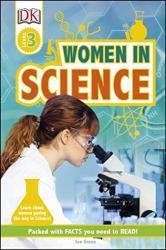
Women In Science is a book which covers the lives of outstanding
women in science. Written for readers from 7-9, this book inspires young
readers with the incredible wonders of science. Too, it highlights these
contributions to the field which have been made by women. A simple and
digestible read, this book would be ideal for any young girl interested in
the scientific field. I would recommend this book.

Another great graphic novel by Raina Telgemeier. As Raina deals with friends, food, and changes in school she begins to find herself. This is a great book that many teens would find relatable and fun to read. The art in these books is so detailed and colorful. I have read all of Raina Telgemeier's books and I love her stories of finding your way.
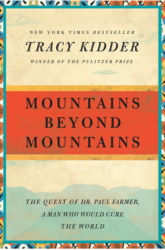
Mountains Beyond Mountains is a phenomenal biography detailing the work of Dr. Paul Farmer in Haiti and Boston. Kidder follows Farmer's story between his life in Boston, Haiti, and France, the constant travelling to see his patients in the former and his family in France. The story of Dr.Farmer is incredibly inspiring and eye-opening as it discusses the lack of health care in many places and the need for conscious implementation of medical programs in underdeveloped countries. Not only does Kidder follow Farmer to his hospitals, home visits, etc. but he follows him as Farmer changes medical institutions across the world. This is an amazing read and I highly suggest it to anybody interested in the medical field, the developing versus the developed world, or somebody just wanting an interesting story.
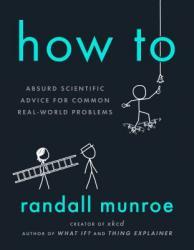
I’ve been a fan of Randall Munroe’s work for quite some time. This artist
of the xkcd webcomic certainly has a sense of humor that I appreciate, so I
looked forward to his latest book, How To: Absurd Scientific Advice for
Common Real-World Problems. While his previous book, What if? covered
hypothetical scenarios asked by the users of the internet, How To takes a
somewhat opposite approach by using extreme science to do the most basic
things imaginable. If you’re looking for simple answers, this isn’t the
book for you.
While it’s fun to think of the most complicated way to (for example) be on
time, often the joke goes on a little too long as the exact science behind
the absurdity is explained. There were times I felt I was reading a textbook
instead of a humorous treatise on how to cross a river. Even though I do
enjoy some extreme aspects of science, there is a limit to this enjoyment.
And perhaps this was because most of the science explained in this book felt
fairly rudimentary. Back of the envelope calculations can work for these
hypothetical situations, so it’s not like we needed the exact distance
George Washington could fling a silver dollar.
Despite its occasionally dry scientific explanations, the writing and
illustrations often had me laughing out loud. Many of the footnotes were
particularly hilarious. So while the content often felt like it was being
taken quite seriously, the slight tinge of humor always reminded me that the
whole exercise was to be as tongue-in-cheek as possible. If anything, this
book should give any reader a good sense of how we shouldn’t take the
simple solution for granted. After all, it’s probably much less
radioactive.
Some dry science covered in healthy layers of humor, I give How To 4.0 stars
out of 5.

This book was amazing. From a Christian standpoint, Lysa really gets into disappointments in the faith that I feel people are too shy to talk about. It is a very honest book with personal accounts of disappointments and fears. It isn't preachy, it is matter-of-fact. I have a hard time with general christian books because they can often times sugarcoat or completely ignore the stuff no one wants to talk about; so this book was very promising and refreshing!!
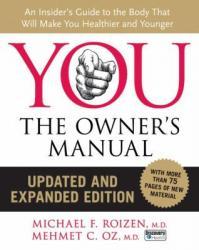
I wish this had been the book for my high school Health Class. The authors' light tone and sense of humor made the often dry subject enjoyable. I appreciated that these doctors tell you when the science is being heavily debated or is currently just a hypothesis. The title could just as easily be "What Western Medicine Has Learned So Far". That is absolutely a compliment to these doctors and their commitment to the idea that every patient is different and each of us is ultimately responsible for our own health care.
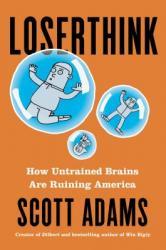
Loserthink is a fascinating book that anyone can learn something from. Scott Adams, the creator of Dilbert comics, has written several books that deal with a variety of topics such as the art of persuasion. In Loserthink, Adams talks about the ability to think critically to avoid "mental prisons" and ineffective ways of thinking he calls loserthink. Adams says that avoiding loserthink allows us to win arguments and speak more intelligently on complicated topics. I found Loserthink to be the perfect blend of humor and real-life application as well as very useful. While I don't agree with everything Adams says, he offers a balanced perspective of many political views and he gave several mechanisms that I wish to apply to my thinking. Overall, I enjoyed Loserthink and recommend it to any reader that wishes to be improve their intellectual prowess.

When it comes to biographies of famous artists, it can be difficult to separate their life from their life’s work. It is fascinating to understand the influences of an artist, especially when in the context of their creation. However, much of the ability to talk about the artist’s life depends on common knowledge of their artistic portfolio. For slightly more obscure artists, finding the balance between discussing their personal life and providing an explanation of their art can be a challenge. Schumann: The Faces and the Masks attempts to cover both Robert Schumann’s life and his musical pieces.
While revealing some of the more interesting secret codes in Schumann’s music in this book, the moments discussing the songs in detail seem to derail the whole narrative of the biography. Schumann’s life was fascinating enough as it was, with the drama involved in his marriage to Clara Wieck, as well as his involvement with several other famous musicians (like Mendelssohn and Brahms). Bringing in sections that basically amount to music theory might have been better suited in an appendix instead of fusing with the story as it progressed through his life.
Despite these jarring asides, Schumann’s life story is still interesting enough that I suggest anyone who is interested in Romantic composers, or even music in general, should give this book a read. The author does an excellent job of highlighting the ups and downs of this creative individual who suffered for his art almost as much as he suffered from his various conditions (an STI and a clear case of bipolar disorder). The fact that he had such a talented and devoted wife in Clara throughout his life is merely a testament to how forward their relationship was and how transformative she was on his life on the whole.
A fascinating biography with jarring bits of music theory, I give Schumann: The Faces and the Masks 3.5 stars out of 5.

This book is an insider's look at the military establishment, particularly the elite Navy forces. Johnson overcomes so much to become a fighter pilot only to be alienated by the Navy's most elite squadron. Told with honesty, Johnson's grit is something to be admired.
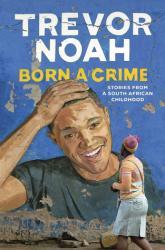
Not bad. I was expecting more on his move to Los Angeles and the establishment of his career and time on the Daily Show but the memoir doesn't cover that. I guess I should have known that judging by the title. There was a little bit of jumping around and muddling of incidents in his life, but overall it was educational and entertaining.
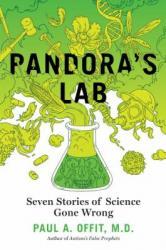
Science is an interesting realm. The public would sure like to think that all scientists are dedicated to finding the purest form of some scientific concept and modifying it to benefit society. However, some things become readily clear: not all societies are the same, and science can be abused. If anything, some of the worst scientific discoveries of the last few centuries were made with the best intentions. Unfortunately, more often than not, the full science wasn’t brought to the table, and plenty of people suffered because of it. Enter Pandora’s Lab, a selection of a few of the worst scientific discoveries and the stories behind what made them go awry.
Each of the scientific discoveries covered in this book had slightly different negative impacts on the world, but the reason why they became so notorious is almost ubiquitous. Science is no place for emotion, so finding quick fixes for something by using science can create worse problems than the ones that were initially there. Scientific rigor is also of utmost importance. Even if many of these horrific discoveries received Nobel prizes, hindsight showed skewed results from the start. Every new and fantastic technology created from scientific research should be scrutinized with a heaping of salt to ensure it can’t be abused.
On the flip side, ignoring sound scientific facts or not considering the full, worldwide implications of a discovery is just as dangerous. Ignorance is bliss, as long as the consequences don’t directly impact you. While we do have the benefit of hindsight, it’s essential to use the lessons presented in this book. We need to examine the science and technology being developed today and do our due diligence to make sure that they don’t inspire genocide or doom all of humanity to an unsustainable new way of life.
A grave lesson about the consequences of bad science, I give Pandora’s Lab 4.0 stars out of 5.
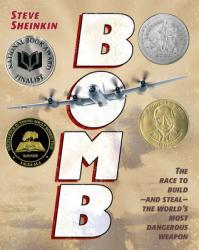
This book is perfect for young history enthusiasts, around the age of middle school. It's all about how the world's deadliest weapon was created, researched, spied on, and used. Explaining the race and allies of America to win the Cold War and beat Russia and Japan in creating the very first atomic bomb, this real-life story includes many famous scientists and new scientific discoveries. If you love action, science, and history, then I promise you'll love this book. It is super unpredictable and has a pretty sad ending when one of the countries wins. But who wins? Guess you're going to have to read to find out. Reviewer Grade: 8
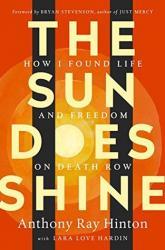
Wow. I didn't think there is still rampant racism in America but boy was I proven wrong. In 1985, Ray Hinton was unjustly incarcerated in Alabama and will held in Death Row for 30 years. The prosecutor, police, jury, and judge were all white and despite his clear alibi he was found guilty. The police officer who arrested him said he believed Hinton was innocent but was still going to arrest him because if it's not him, it's someone 'like him.'
Throughout his heinous unjust incarceration on death row, Hinton never lost hope that he would be exonerated. His spirit helped the most hardened criminals shoulder their last days.
Eventually Hinton was exonerated, but not before the prime of his life had been stolen from him. He dedicates his life now to abolishing the death penalty, calling it a broken system. According to statistics, 1 in 10 inmates on death row are innocent.
This is a powerful memoir about survival, hope, and resilience. I highly recommend it.
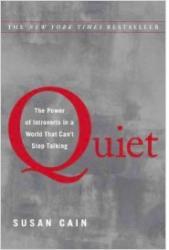
While it’s taken me a long time to finally get around to reading this book, most of what Quiet presented was what I had already known by living my life as an introvert. I will applaud this book’s ability to help society realize how ubiquitous the introverts that comprise the population are. Quiet also helps show what our needs are in this world that prizes the traits of extroversion over anything else. Even if there are many times where I have to put on my “extrovert suit,” it helps to know that there’s nothing wrong with being an introvert.
Perhaps my only qualm with this book is how anecdotal the evidence is. Whether it’s stories about famous introverts (which can be inspiring) or younger introverts who are being brought up by parents who don’t quite understand the strengths of the introvert type, Quiet uses a lot of case studies to show how out of place introverts are, especially in the United States. I understand it can be challenging to study a personality type that’s so broad, but a few more references to scientific studies would have been helpful.
What struck me in Quiet was the background it provided on why society evolved to value the extroverts and deem the introverts as “problems.” I still see the effects of this emphasis today. Sure, I put up with being an introvert in an extrovert’s world, and I have made adaptations in my life to survive and thrive in it. I can empathize with the introverts who cannot cope, though, and hopefully, this book can continue to help introverts claim this personality type and own it as I have over the years. Even if we’re different from the perceived norm, we still provide value to a world that insists that louder is better.
A great anthem for those introverts who feel out of place in a gregarious society, I give Quiet 4.0 stars out of 5.
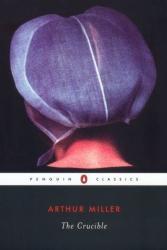
Arthur Miller creates a horrifying and suspenseful narrative in his iconic play The Crucible with the intention of realistically depicting a terrible chapter in our country’s history. The play follows a group of young women, led by Abigail Parris, as they accuse hundreds of people of witchcraft, and cause a massive panic among the townspeople.
The Salem Witch trials is a topic that is mostly looked over in our history classes, so this book was extremely interesting in that it depicted an event that I only had surface level knowledge of. I was fascinated with the intense depth of all of the characters, and the almost rational actions of the villains. This book was perfect to read right before Halloween. Despite these things, the narrative can be somewhat slow at times, and while I enjoyed the historical anecdotes embedded in the book, they distracted me from the actual story. However, the rest of the book was great and I highly recommend it.
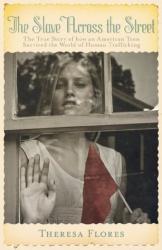
This is a highly disturbing but about a teenager that gets caught up in a sex slave ring in the Detroit suburbs. It's a very graphic depiction about the trauma she endured for 2 years, trying to protect her family. It's hard to imagine that this could happen in the American suburbs, but it does. Leaning heavily on her faith, she overcame the trauma and terrifying memories, and starts working to help other girls like her.
Not expertly written and too preachy for my taste, I was riveted and disgusted by the graphic scenes of her repeated torture. It made me angry that her parents didn't notice something was wrong, and that teachers and security officers at her school who saw what was happening didn't do anything because they were afraid of her captors. Overall, a good but highly disturbing read.
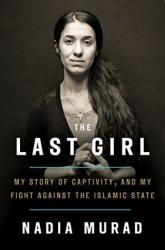
Wow. Just wow. Nadia takes us through the miasma of Iraq sects and their competing values. She also talks about the Iraq war and the birth of ISIS from the rubble of the American occupation. However, in the most intimate way, she tells us about her sect, the Yazidis and their religion, persecution, and relationship with the Islamic State. And it's here that the real story begins.
In August of 2014, Nadia's village was occupied by ISIS, ending in the genocide of her people. She and other girls we sold into slavery and were considered less than human to their captors. Nadia pulls no punches about what she endured. It's brutal. In a series of fortunate events, Nadia embarks on a dangerous escape.
Told with honesty and forthrightness, this book kept me on the edge of my seat. I was highly disturbed by the sex slave recollections, which was her intention, and fascinated by her explanation of the regions, sects, and politics of Iraq, something I knew very little about. Despite the intense subject matter, I highly recommend this book. It was fantastic.
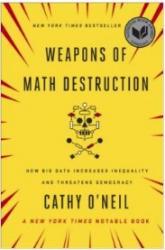
I love data. I love what it can show us as individuals and what it can show as society changes from year to year. Being able to trend my spending is just as useful to me as knowing how many people are participating in my National Novel Writing Month region. Because I’m always interested in seeing what pure numbers can show me about the world, I was intrigued to find this book, Weapons of Math Destruction. While I had already heard many of this book’s conclusions, it was interesting to read about the algorithms that work silently behind the scenes of our society and how nobody can really control or change them.
I’ll agree that it’s terrifying to have decision-making boiled down to a number popped out of an algorithm that decision-makers just blindly trust without understanding the rules of causality or correlation. People are messy, so I understand how finding a single aggregating number to represent an individual is a simple solution. However, I agree with the author’s outrage that these numbers are putting the disenfranchised into a toxic and harmful feedback loop. It’s difficult enough to survive out there without an arbitrary number determining your fate and you having little to no ability to change it. Of course, this point is pounded home about one or two times too many in this book.
From personal experience, I have received a brief glimpse behind the curtain into how these algorithms work. When I got married, I moved from one zip code to another in the same town. At that point, my car insurance premiums suddenly went up. Why? Because I was in a zip code filled with people who were “bad drivers.” Despite nothing about me or my car changing, now I was suddenly a bad driver. I do think there are some substantial reforms needed in these algorithmic systems. Still, I don’t necessarily think the solutions provided by the author are the right answer (they seem mostly based on the author’s personal opinions and biases).
A repetitive look into the dangers of blindly trusting algorithms, I give Weapons of Math Destruction 3.5 stars out of 5.
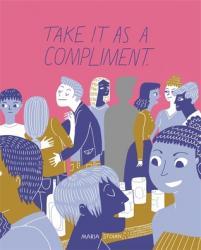
A graphic novel featuring true reports of sexual harassment and assault in its many forms. A really powerful, quick read. My only problem with it is I wish it was longer. I read it in about 30 minutes. I did like the format of graphic novel. It made it seem more lighthearted than it actually is, which further illustrates the darkness of the subject matter.


